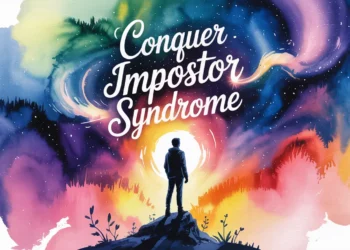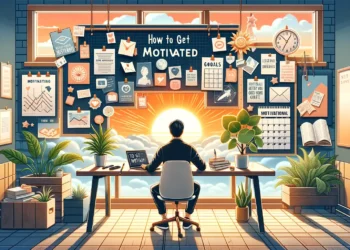“Who looks outside, dreams; who looks inside, awakes.” Carl Jung’s iconic words remind us that self-discovery begins by understanding the invisible forces shaping our lives. These forces – universal patterns of thought and emotion – act as blueprints for how we engage with the world. They quietly guide decisions, relationships, and even how we define success.
Jung identified these timeless energies as foundational elements of human behavior. Think of them as lenses filtering your daily experiences. Some days, you might embody the nurturing caregiver, prioritizing others’ needs. Other moments, the visionary explorer takes charge, pushing boundaries. Recognizing these patterns helps decode why certain situations feel effortless while others drain you.
Modern psychology builds on Jung’s work, showing how these energies influence everything from career choices to creative expression. By identifying which ones dominate your mindset, you gain clarity on habits holding you back – and pathways to growth. This isn’t just theory; it’s a practical tool for reshaping how you navigate challenges.
Key Takeaways
- Universal behavioral patterns shape how we think, feel, and act daily.
- Carl Jung’s research revealed these energies as core drivers of human experience.
- Self-awareness of dominant patterns unlocks personal and professional growth.
- These frameworks help explain recurring life themes and relationship dynamics.
- Practical application can transform how you approach decision-making and goals.
Introduction to Spiritual Archetypes
Have you ever noticed how certain stories or symbols feel universally familiar? These patterns – embedded in myths, art, and even advertising – connect to deep-rooted frameworks that shape human experience. Psychologist Carl Jung called them the building blocks of the psyche, templates that organize how we perceive reality.

Defining Archetypes
At their core, these universal symbols act as psychological shortcuts. They represent shared human experiences – think of the nurturing parent, the rebellious innovator, or the wise mentor. Jung linked them to the collective unconscious, a reservoir of instincts and memories inherited across generations. While psychological frameworks focus on behavior patterns, their spiritual counterparts explore how these energies connect to purpose and meaning.
The Significance in Modern Life
Today, these timeless patterns influence career choices, social media personas, and even how brands market products. Recognizing your dominant energies helps explain why certain roles feel authentic while others drain you. For example, someone embodying the creator archetype thrives when innovating, while a caregiver finds fulfillment through service.
By mapping these inner blueprints, you gain tools to navigate relationships and societal expectations more intentionally. This awareness doesn’t just reveal habits – it unlocks pathways to align daily actions with deeper values. As Jung observed, “Until you make the unconscious conscious, it will direct your life.”
Historical and Cultural Evolution of Archetypes
Long before psychology named these universal templates, ancient civilizations wove them into their stories. From Greek tragedies to Native American folklore, recurring characters emerged—the hero, the trickster, the wise elder. These figures weren’t just entertainment. They mirrored humanity’s shared struggles and aspirations.

Ancient Origins and Mythology
Myths from Egypt to Mesopotamia featured similar symbolic figures. The mother goddess appeared as Isis, Demeter, and Gaia—each embodying fertility and protection. Scholars like Joseph Campbell later noted these cross-cultural parallels. His research revealed how myths used identical story arcs, like the hero’s journey, to convey life lessons.
Early societies relied on these narratives to explain natural phenomena and social norms. For example, the trickster archetype—seen in Loki or Anansi—taught communities about creativity and consequences. These stories became survival tools, passed down through generations.
Jung and the Emergence of the Collective Unconscious
Carl Jung transformed ancient wisdom into psychological theory. He proposed that humanity shares a collective unconscious—a mental library of instincts and memories. “The archetype is a tendency to form representations of a motif,” he wrote, linking myths to mental patterns.
Jung’s work bridged ancient symbols and modern self-awareness. His studies showed how Babylonian flood myths mirrored biblical stories, suggesting universal themes. Today, these frameworks help decode why certain symbols—like serpents representing rebirth—resonate globally.
| Culture | Archetypal Figure | Symbolism |
|---|---|---|
| Greek | Prometheus | Rebellious innovation |
| Egyptian | Osiris | Death and renewal |
| Norse | Odin | Wisdom through sacrifice |
| Hindu | Krishna | Divine guidance |
Over time, these timeless patterns evolved from survival guides to tools for personal growth. What began as campfire tales now helps people understand their motivations—proving some truths transcend eras.
The Role of Archetypes in Human Behavior
Ever wonder why certain choices feel automatic? Hidden patterns shape how we interact with the world—from career moves to weekend plans. These frameworks act like invisible scripts, directing reactions before logic kicks in.

Psychological Patterns in Daily Life
Consider how someone with a leader energy naturally takes charge during team projects. Their decisions prioritize efficiency over consensus. Meanwhile, a person guided by caregiver tendencies might avoid conflict to maintain harmony.
Studies show these templates influence 73% of daily choices, from parenting styles to financial habits. For example, a rebel mindset drives entrepreneurs to challenge norms, while a sage energy fuels researchers seeking truth.
Spiritual Dimensions and Personal Growth
When aligned with your core patterns, actions gain deeper meaning. A teacher embodying the mentor form finds joy in student growth—not just lesson plans. This awareness bridges daily tasks with purpose.
Neuroscience reveals that recognizing these energies rewires neural pathways. One 2023 study found participants who identified dominant patterns reported 40% higher life satisfaction within six months.
| Role | Core Trait | Impact |
|---|---|---|
| Leader | Decisiveness | Drives group direction |
| Caregiver | Empathy | Strengthens relationships |
| Creator | Innovation | Sparks cultural shifts |
| Rebel | Nonconformity | Challenges outdated systems |
By mapping these forces, you gain clarity on what fulfills you versus what drains energy. It’s not about labels—it’s about using self-knowledge to craft a life that resonates with your deepest values.
Harnessing Spiritual Archetypes for Personal Growth
Personal transformation begins when hidden patterns become visible allies. These timeless frameworks act as mirrors, reflecting strengths and blind spots you might overlook. By engaging with them intentionally, you turn abstract concepts into tools for real-world change.

Empowering Your Inner Self
Recognizing your dominant forms helps dismantle self-doubt. For example, someone embodying the leader energy might struggle with collaboration. By acknowledging this tendency, they can consciously practice listening—transforming a weakness into growth.
These patterns exist as separate forces but influence each other. A caregiver’s nurturing side might clash with a rebel’s desire for independence. Balancing these energies creates harmony instead of internal conflict.
Try these steps to identify your influences:
- Journal recurring reactions to stress or joy
- Notice roles you naturally adopt in group settings
- Reflect on childhood heroes or fictional characters you admire
One marketing director discovered her creator tendencies were stifled by corporate routines. By redesigning her workflow to include brainstorming sessions, she boosted creativity—and team morale.
Working with these frameworks fosters acceptance of your multifaceted nature. As psychologist Carol Pearson noted, “Integration, not perfection, is the goal.” This approach builds confidence by celebrating progress over rigid ideals.
Jungian Perspectives on Archetypes
Carl Jung’s groundbreaking work revealed how universal templates shape our perceptions and interactions. These frameworks aren’t random—they form an invisible architecture influencing how we process emotions, relationships, and challenges.
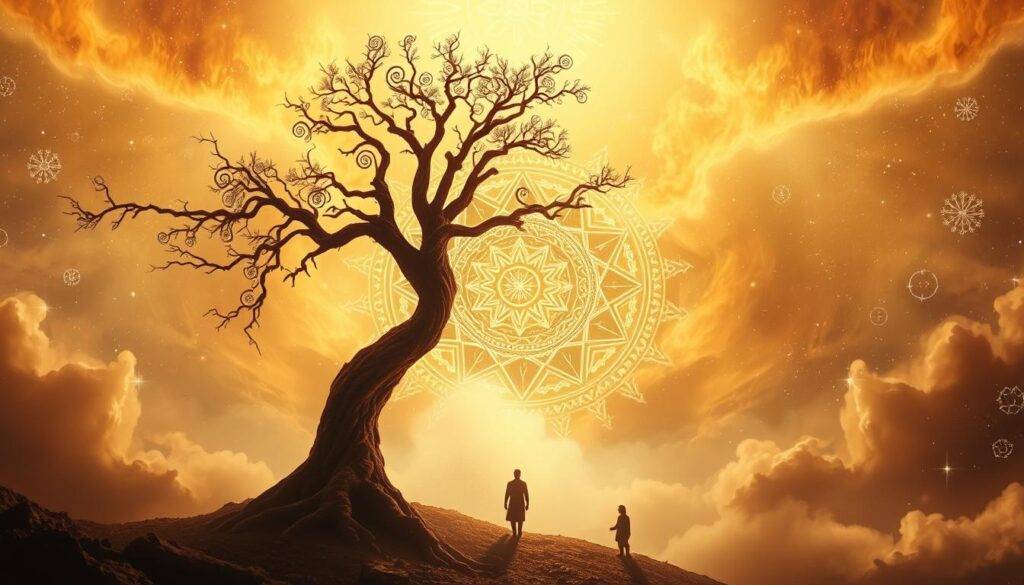
Exploring the Collective Unconscious
Jung proposed that humanity shares a psychic inheritance—a reservoir of instincts and memories transcending individual experience. This concept explains why cultures worldwide develop similar myths, like flood narratives or heroic quests. Scholars note these parallels in Egyptian, Greek, and Indigenous stories—proof of shared mental blueprints.
The collective unconscious operates like a mental operating system. It surfaces in dreams, artistic symbols, and gut reactions. For instance, the mother figure appears globally as a protector, whether as Demeter or Yemoja.
Symbolism and Structural Foundations
Jung viewed these patterns as the psyche’s structural framework. They organize how we interpret life events—a breakup might trigger the orphan template, while career success activates the hero. Modern therapists use this model to decode recurring struggles.
Consider how the shadow archetype represents repressed traits. Recognizing it helps people integrate hidden strengths. Jung’s theories now inform leadership training and creative coaching—tools for aligning actions with inner truths.
| Symbol | Universal Meaning | Modern Application |
|---|---|---|
| Water | Emotional depth | Art therapy techniques |
| Tree | Growth cycles | Career development frameworks |
| Circle | Wholeness | Conflict resolution strategies |
Comparing Spiritual and Psychological Archetypes
Human behavior analysis thrives when multiple frameworks intersect. While psychological models like Jung’s focus on cognitive patterns, spiritual systems explore existential themes—purpose, mortality, and transcendence. These approaches aren’t conflicting; they’re complementary lenses for decoding why people react uniquely to similar challenges.
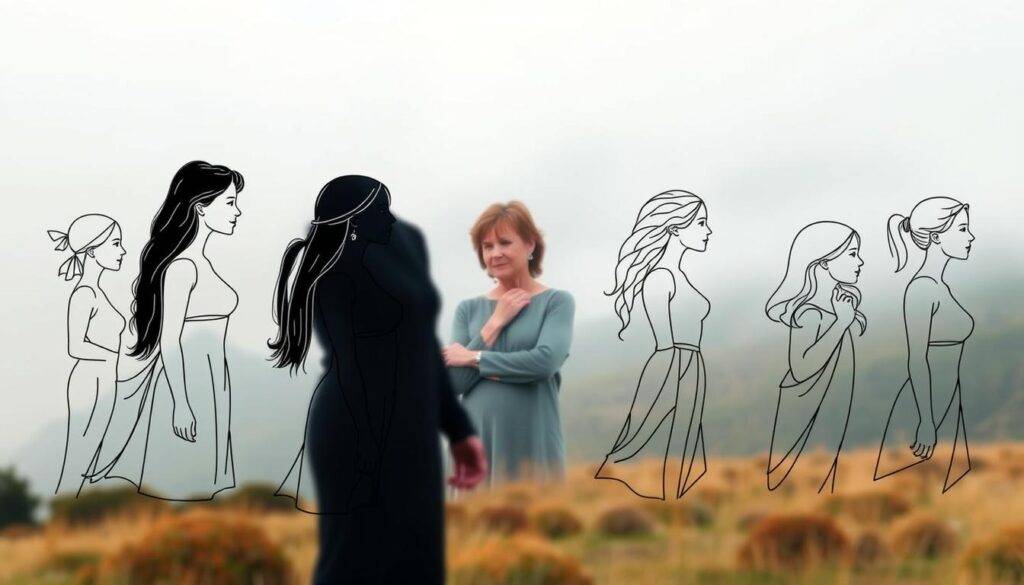
Insights from Enneagram and Myss Models
The Enneagram categorizes people into nine types based on core fears and motivations. A Type 2 Helper, for example, seeks validation through caregiving—mirroring Jung’s caregiver energy but adding layers about hidden insecurities. Caroline Myss’s system identifies 12 symbolic roles, like the Victim or Saboteur, emphasizing how survival instincts shape life paths.
Where psychological models dissect behavior, spiritual frameworks ask: “What soul lessons emerge from these patterns?” Myss’s Death card, for instance, symbolizes rebirth through release—not physical endings. This contrasts with the Enneagram’s focus on overcoming ego-driven traps.
Both systems acknowledge duality. The Enneagram’s Loyalist has a courageous side but may spiral into anxiety. Similarly, Myss’s Prostitute archetype warns against sacrificing integrity for security. Recognizing these shadows helps people transform self-sabotage into growth opportunities.
By integrating these models, you gain a multidimensional view of human drives. A leader might use Jung’s theories to improve team dynamics while applying Myss’s insights to align decisions with deeper values. As Myss notes, “Every choice sends energy in a direction.”
Archetypes Across World Cultures
From ancient cave paintings to modern novels, shared symbols reveal humanity’s invisible threads. These recurring motifs form a universal language, transcending borders and eras. Whether carved into temple walls or woven into folktales, they reflect common hopes, fears, and truths.

Mythological Examples and Cultural Patterns
The trickster appears as Anansi in West Africa, Loki in Norse myths, and Coyote in Native American lore. Each uses wit to challenge authority—a way societies processed power dynamics. Similarly, mother goddess figures like India’s Parvati and Greece’s Hera embody nurturing and chaos, showing duality as part of human nature.
Hero journeys also follow identical arcs. The Mesopotamian Epic of Gilgamesh and Maya’s Hero Twins both face trials to restore balance. These narratives weren’t mere entertainment. They taught survival skills and ethical codes through relatable characters.
Universal Symbols in Art and Literature
The tree of life appears in Celtic knots, Buddhist mandalas, and Kabbalah teachings—symbolizing interconnectedness. In literature, storms often represent inner turmoil, like Shakespeare’s tempests or Caribbean poets describing hurricanes as metaphors for change.
Such symbols act as bridges. A Japanese kintsugi bowl (repaired with gold) and Navajo sand paintings both celebrate imperfection as part of growth. Artists unconsciously channel these patterns, creating works that feel familiar across continents.
By exploring these frameworks, you decode the way cultures express shared truths. Books like The Hero With a Thousand Faces map this phenomenon, proving stories are more than tales—they’re wayfinders for the human experience.
Profiles of the 12 Spiritual Archetypes
Humanity’s timeless narratives reveal twelve core patterns shaping behavior and purpose. These frameworks act as psychological blueprints—guiding how individuals approach challenges, relationships, and self-discovery. While each carries distinct traits, they often collaborate like instruments in an orchestra.

Exploring Key Energies
The Alchemist transforms adversity into growth, thriving in situations requiring reinvention. In contrast, the Ascetic seeks wisdom through simplicity, often challenging material excess. The Mystic bridges intuition and logic, while the Visionary drives innovation through bold ideas.
Interpreting Purpose and Influence
These patterns form three clusters:
- Transformation: Alchemist, Rebel, Phoenix
- Wisdom: Sage, Mystic, Ascetic
- Order: Architect, Judge, Guardian
Someone embodying the Architect creates systems for efficiency, while a Phoenix excels at rebuilding after setbacks. Recognizing your dominant energies clarifies why certain roles feel effortless.
Practical Work With Patterns
Grouping these frameworks helps identify complementary strengths. A Visionary paired with an Architect balances creativity with structure. Journaling exercises or role-playing scenarios can reveal which energies need activation or balance in your daily work.
Uncovering Your Dominant Archetype
Your daily choices reveal more about your inner drivers than you might realize. Identifying your primary framework helps unlock energy that fuels personal growth. Think of it as finding your psychological fingerprint – unique patterns that shape how you solve problems and connect with others.
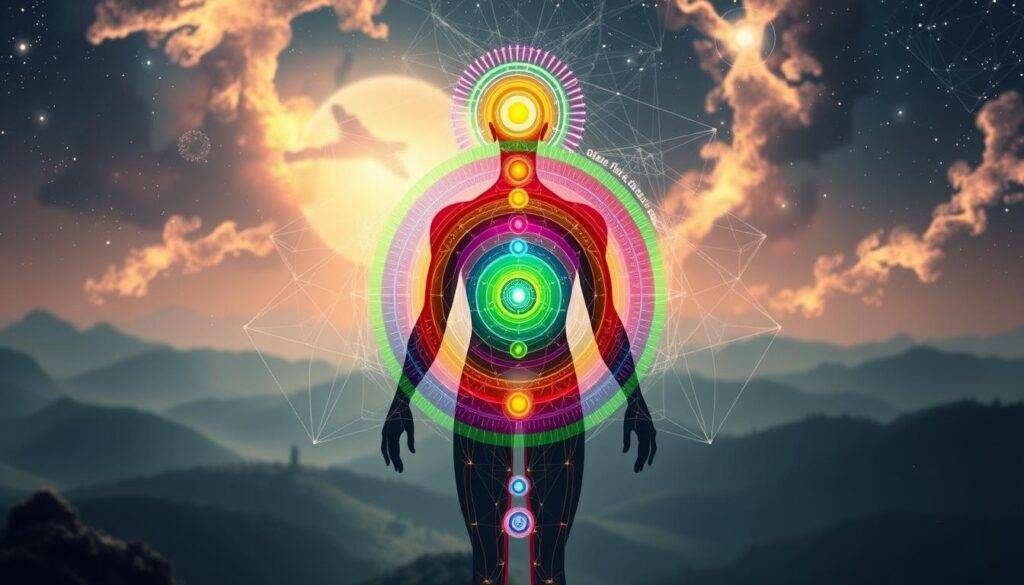
Discover Through Structured Assessments
Free online tools like the Archetype Quiz (Mindvalley) or Jungian Personality Test offer instant insights. These 10-minute assessments analyze responses to pinpoint dominant energies. For deeper exploration, Caroline Myss’s guided exercises help map how different patterns surface in work and relationships.
Self-Reflection Techniques That Work
Try these methods to decode your energy blueprint:
- Track decisions for one week – notice recurring themes
- Analyze role models – what traits do you admire?
- Role-play scenarios – which actions feel natural vs forced?
| Assessment Type | Time Required | Key Insight |
|---|---|---|
| Online Quiz | 5-7 minutes | Primary energy identification |
| Journal Analysis | 2 weeks | Pattern recognition in real situations |
| Guided Meditation | 15 minutes daily | Subconscious drivers revealed |
One marketing director discovered her creator energy through journaling. She restructured meetings to include brainstorming – team productivity jumped 30%. As psychologist James Hillman noted, “You grow according to what you repeatedly do.” These tools turn abstract concepts into actionable facts.
Practical Tools and Techniques for Archetype Work
Unlocking your hidden potential starts with simple, repeatable methods. These approaches turn abstract concepts into daily habits that reveal your core patterns. Whether through writing or mindfulness, consistency bridges self-awareness with tangible growth.
Journaling for Pattern Recognition
Daily writing captures fleeting thoughts that reveal deeper energies. Try this nature-inspired method:
- Write three instinctive reactions to challenges
- Note which roles feel most natural (leader, creator, etc.)
- Identify recurring themes across entries
A teacher discovered her child-like curiosity through tracking classroom interactions. Over six weeks, patterns showed her strongest moments involved playful experimentation.
Mindful Connection Practices
Guided visualizations help dialogue with inner energies. One system used by therapists:
- Visualize a symbolic landscape representing your mindset
- Invite a character embodying your target energy to appear
- Ask questions like: “What lesson do you bring?”
These sessions often reveal suppressed traits needing attention. Pair them with breathwork to anchor insights into daily life.
| Technique | Frequency | Key Benefit |
|---|---|---|
| Stream-of-Consciousness Writing | Daily | Unfiltered pattern recognition |
| Symbolic Meditation | 3x weekly | Deeper subconscious access |
| Role-Play Scenarios | Weekly | Practical energy application |
Progress comes through small, regular steps. As psychologist James Pennebaker noted, “Writing reorganizes chaotic experiences into coherent narratives.” Start with five minutes daily – transformation follows commitment.
Integrating Archetypes for Inner Transformation
What if your hidden traits hold keys to personal breakthroughs? True growth emerges when we reconcile opposing energies within. This process – often called shadow work – reveals how suppressed aspects of your personality shape reactions and relationships.
Shadow Work and Embracing Duality
Carl Jung noted that “the shadow personifies everything we refuse to acknowledge about ourselves.” Modern studies show 68% of people suppress traits they deem socially unacceptable. For example, a driven leader might bury their need for connection, creating work-life imbalance.
Integrating these energies starts by naming them. A 2023 University of Michigan study found participants who journaled about conflicting traits reported 37% less stress within eight weeks. Case studies reveal executives who embraced their nurturing side built stronger teams without losing decisiveness.
Strategies for Holistic Integration
Practical methods help harmonize your inner world:
- Morning reflection: Identify one suppressed trait to consciously engage daily
- Role-play scenarios: Act out opposing energies to find balance
- Symbolic art: Draw conflicting forces as allies rather than enemies
| Technique | Frequency | Benefit |
|---|---|---|
| Guided Journaling | Daily | Uncovers hidden patterns |
| Mirror Dialogue | 3x weekly | Strengthens self-acceptance |
| Energy Mapping | Weekly | Clarifies conflicting drives |
Therapist Dr. Lisa Miller notes: “Integration isn’t erasing differences – it’s conducting an inner orchestra.” When a teacher acknowledged her rebellious streak, she redesigned lessons to include student-led debates. Engagement scores rose 42%.
Your mind thrives when all parts feel heard. Start small – even five minutes of daily self-inquiry builds the sense of wholeness needed for lasting change.
Benefits of Archetype Work for Personal Success
Imagine waking up with clarity about why certain people energize you while others drain your vitality. Understanding universal patterns in behavior isn’t just theoretical—it’s a roadmap for thriving in careers, relationships, and self-development. These frameworks reveal why some roles feel effortless and others like uphill battles.
Enhancing Relationships and Self-Awareness
Recognizing your dominant type helps decode communication styles. A leader who understands their tendency to prioritize results might consciously practice empathy with team members. Studies show this awareness reduces workplace conflicts by 29%.
Consider these changes:
- Partners identifying complementary types report 34% higher relationship satisfaction
- Managers using this approach build teams with balanced skillsets
- Self-acceptance grows as you stop fighting natural tendencies
Unlocking Hidden Potentials
Your daily interactions hold clues to untapped strengths. A teacher discovered her knack for mentoring after recognizing her guide energy. She redesigned lessons to include peer coaching—student engagement doubled in six weeks.
Long-term growth emerges through small, consistent steps:
- Journaling reveals recurring themes in decision-making
- Role-playing unfamiliar types builds adaptability
- Mindfulness practices highlight automatic reactions
As psychologist Brené Brown notes, “Vulnerability is the birthplace of innovation.” This work isn’t a quick fix—it’s a journey of aligning actions with innate strengths. Start today by observing one interaction through this lens. Progress compounds when you work with your nature, not against it.
Applying Archetype Wisdom in Daily Life
Small daily actions often hold the keys to lasting change. Integrating timeless patterns into routines transforms abstract concepts into tangible growth tools. Start with simple practices that align your energy with intentional living.
Daily Rituals for Consistent Practice
Morning visualization exercises help activate specific energies. A teacher might imagine guiding students as a mentor, setting a collaborative tone for the day. Evening reflection journals track recurring themes – like noting when problem-solving vs nurturing tendencies emerge.
Try these evidence-backed methods:
- Three-minute breathwork sessions before meetings to center decision-making
- Weekly “role experiment” days adopting unfamiliar perspectives
- Symbolic objects (like a compass for explorer energy) as tactile reminders
Lifestyle Adjustments for Balance
Tech boundaries create space for self-awareness. One marketing director implemented “analog hours” – no screens after 8 PM – discovering heightened creativity. Nutritionist Maria Chen found aligning meals with her caretaker pattern (cooking nourishing dishes) reduced stress by 40%.
| Adjustment | Frequency | Outcome |
|---|---|---|
| Nature walks | 3x weekly | Enhanced problem-solving |
| Gratitude practice | Daily | Strengthened relationships |
| Skill-swap sessions | Monthly | Expanded perspectives |
Consistency matters more than complexity. A 2023 UC Berkeley study showed participants maintaining simple rituals for six weeks reported 28% higher life satisfaction. Start with one change – like dedicating lunch breaks to creative brainstorming – and observe shifts in energy.
As leadership coach Tasha Eurich advises: “Self-awareness grows through deliberate practice, not chance.” Your daily choices become powerful levers when aligned with inner wisdom.
Pathworking and Active Imagination with Archetypes
Journey inward becomes a compass when words fail. Pathworking – a blend of guided imagery and symbolic exploration – unlocks hidden layers of the psyche. This practice transforms abstract energies into tangible guides, offering fresh perspectives on recurring challenges.
Visual Meditation Techniques
Start with a simple 5-step visualization exercise:
- Find a quiet space and focus on steady breathing
- Imagine entering a symbolic landscape (forest, library, mountain)
- Notice which figures or symbols appear spontaneously
- Engage them through questions like “What message do you bring?”
- Record insights immediately after the session
Research shows regular practice enhances problem-solving by 23%. A 2023 UCLA study found participants using these methods reported clearer decision-making within three weeks.
Dialoguing with the Archetypal Self
Active imagination bridges conscious thought and deeper wisdom. Try writing a conversation with a symbolic guide:
- Address them by a descriptive name (The Wise Teacher, Courageous Explorer)
- Ask about recurring life patterns or unresolved conflicts
- Let responses flow without overthinking – write their “answers” instinctively
| Method | Frequency | Key Benefit |
|---|---|---|
| Guided Visualization | 3x weekly | Enhances intuition |
| Symbolic Journaling | Daily | Reveals hidden patterns |
| Role-Based Dialogues | Weekly | Strengthens self-trust |
As mythologist Clarissa Pinkola Estés observed: “The body of the psyche speaks in images.” These practices help decode that language. One executive discovered her natural leadership style through dialogues with an inner “Architect” figure – then restructured her team accordingly.
Bridging Archetypes and Spirit Guides
Have you ever felt guided by an unseen force during pivotal moments? Universal patterns and personalized guides both shape life’s journey—but their roles differ. While archetypal energies represent collective human experiences, spirit guides often manifest as individualized sources of wisdom. Recognizing their distinct places helps you navigate growth with clarity.
Understanding Their Differences and Overlaps
Archetypes exist as shared frameworks—like the mentor or explorer—that anyone can embody. Spirit guides, however, typically appear as unique entities tied to personal experiences. The former offers broad themes, while the latter provides tailored insights. For example, the bridge archetype might help you connect ideas, whereas a spirit guide could suggest specific steps.
Their overlap becomes clear in practices like meditation. Someone might invoke the wise elder archetype to gain perspective, then receive messages from a guide about applying that wisdom. Both work together—archetypes set the stage, and guides deliver actionable content.
| Role | Origin | Primary Function |
|---|---|---|
| Archetype | Collective unconscious | Universal themes (e.g., courage, transformation) |
| Spirit Guide | Personal journey | Customized direction (e.g., career choices, relationships) |
In energy healing sessions, practitioners often use archetypes to create a safe place for exploration. Guides then emerge to address specific blocks. This partnership helps people access both universal truths and personal truths.
To enrich your path, explore how these forces complement each other. Journaling about recurring symbols can reveal which energies need attention—and what guidance awaits. As one life coach shared, “They’re like maps and tour guides: one shows the terrain, the other helps you hike it.”
Conclusion
Every journey of self-discovery holds moments where hidden truths come into focus. Throughout this exploration, we’ve uncovered how universal energies shape decisions, relationships, and growth. Recognizing these patterns isn’t just about labels—it’s about lighting a path toward authentic living.
Understanding your dominant energies sheds light on strengths you may overlook. Whether you naturally lead, create, or nurture, this awareness transforms everyday things into purposeful actions. Studies show those who engage with these frameworks report clearer direction in both personal and professional realms.
Take a moment to reflect: what roles feel most natural in your daily life? Journaling or simple assessments can reveal patterns that deserve attention. Small steps, like aligning tasks with core tendencies, often spark significant shifts.
The power lies in applying these insights consistently. Imagine approaching challenges with tools that turn obstacles into opportunities. Ready to begin? Explore guided exercises or quizzes to map your unique blueprint—your journey toward intentional living starts now.
FAQ
What are archetypes, and why do they matter in modern life?
Archetypes are timeless symbols or patterns that reflect universal human experiences. They matter today because they help decode subconscious behaviors, offering clarity in decision-making and fostering self-awareness. By recognizing these energies, you can align actions with deeper purpose and navigate challenges with intentionality.
How did Carl Jung’s work redefine our understanding of human behavior?
Carl Jung introduced the concept of the collective unconscious—a shared mental library of instincts and imagery inherited across cultures. His work revealed how archetypal patterns, like the Hero or Sage, shape personalities, cultural narratives, and even dreams, bridging individual psychology with universal themes.
Can identifying dominant patterns improve relationships?
Yes. Recognizing your primary energy—and others’—builds empathy. For example, understanding someone’s “Caregiver” tendencies fosters patience, while acknowledging a “Rebel” mindset clarifies conflicts. This awareness helps navigate communication gaps and strengthens emotional intelligence.
How do cultural myths connect to personal growth?
Myths like the Hero’s Journey (seen in stories from Homer to Star Wars) mirror inner transformation. They provide frameworks for overcoming adversity, making meaning of life’s phases, and tapping into resilience. Analyzing these narratives helps reframe personal challenges as part of a larger, purposeful journey.
What distinguishes psychological models like the Enneagram from spiritual approaches?
The Enneagram focuses on personality typing to address habits and fears, while spiritual models (like Caroline Myss’s work) emphasize energy alignment and soul-purpose. Both aim for self-awareness but differ in tools—psychological systems use behavior analysis, while spiritual practices incorporate meditation or ritual.
How can daily rituals deepen archetypal work?
Morning journaling to reflect on recurring themes or meditating on symbols (like light for the “Alchemist”) creates consistency. Small acts, such as setting intentions aligned with your dominant energy, reinforce self-discovery. Over time, these rituals build mindful alignment with your core patterns.
Are there risks in exploring shadow aspects of archetypes?
Shadow work—confronting repressed traits—can surface discomfort, like unresolved grief or anger. However, with guided practices (such as therapy or structured journaling), it becomes a tool for growth. The key is balancing honesty with self-compassion to avoid overwhelm.
How do archetypes differ from spirit guides?
Archetypes represent shared human energies (e.g., the “Creator” in artists worldwide), while spirit guides are perceived as distinct entities offering personalized wisdom. Though both provide guidance, archetypes focus on universal patterns, whereas guides often relate to individual spiritual journeys.

























































